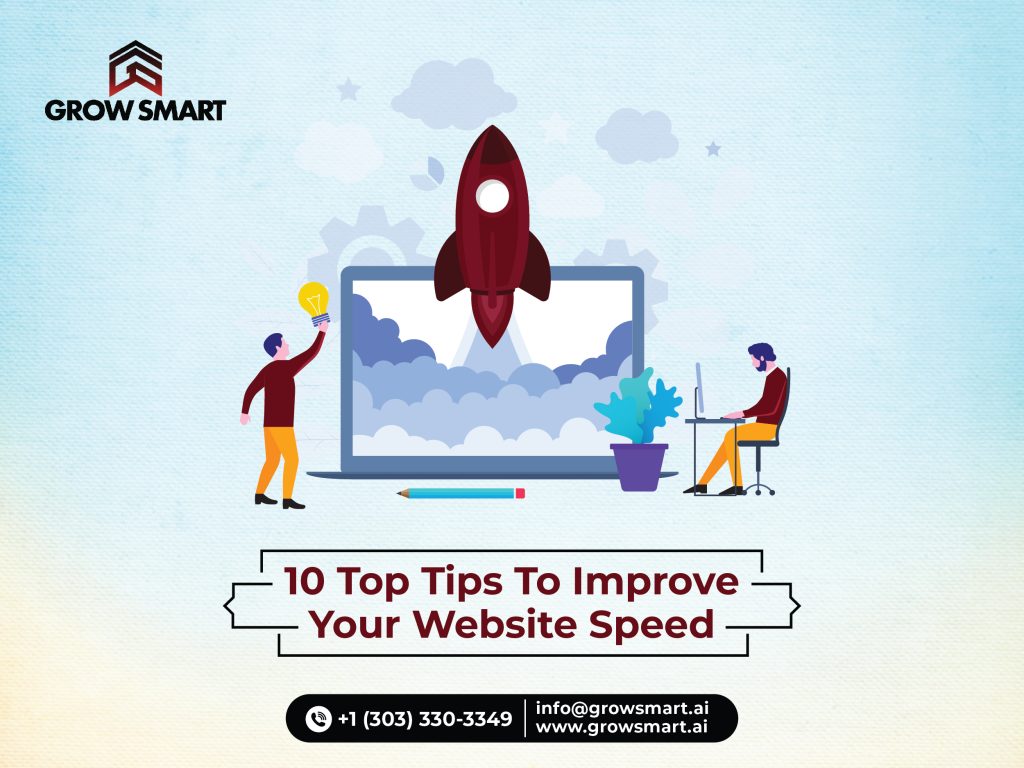
In today’s bustling online world, where seconds count, and attention spans are fleeting, the speed of your website is more than just a technical detail—it’s a game-changer. Imagine this: a potential visitor clicks on your site, eager to explore what you have to offer, only to be met with sluggish loading times. Frustrating, right? Website speed isn’t just about numbers; it’s about creating an experience that captivates your audience from the get-go.
In the following article, we’ll delve into the realm of website speed, uncovering why it matters and providing you with a comprehensive guide on the “10 Top Tips To Improve Your Website Speed.” From the intricacies of optimizing images to the importance of mobile responsiveness, we’re about to embark on a journey to enhance your website’s performance. So, buckle up, and let’s make your website faster, sleeker, and more user-friendly than ever before!
Why Website Speed Matters
Impact on User Experience
A slow-loading website frustrates users, leading to higher bounce rates and a negative perception of your brand. Users expect instant access to information, and a delay of even a few seconds can result in lost opportunities.
Influence on Search Engine Rankings
Search engines, like Google, consider page speed as a ranking factor. Faster websites are more likely to appear higher in search results, contributing to increased visibility and organic traffic.
The Need for Speed
The attention span of internet users is dwindling. Studies show that users decide within a few seconds whether to stay on a webpage or abandon it. A speedy website captures and retains attention, significantly impacting user engagement.
Assessing Your Current Speed
Tools for Speed Evaluation
Utilize tools like Google PageSpeed Insights and GTmetrix to assess your website’s speed. These tools provide detailed reports on performance metrics and suggest improvements.
Interpreting Speed Test Results
Understand metrics such as Page Load Time, Time to First Byte (TTFB), and Render-Blocking Resources to identify areas for improvement.
Optimizing Images
Choosing the Right File Format
Selecting the appropriate image file format (JPEG, PNG, or WebP) can significantly reduce file sizes without compromising quality.
Implementing Image Compression
Utilize image compression tools to reduce the file size of images, ensuring faster loading times without sacrificing visual appeal.
Effective Caching Strategies
Browser Caching
Implement browser caching to store static files locally on visitors’ devices, reducing the need to reload resources on subsequent visits.
Server-Side Caching
Leverage server-side caching to generate and store static HTML versions of your web pages, minimizing server processing time.
Minimizing HTTP Requests
Combining CSS and JavaScript Files
Reduce the number of HTTP requests by combining CSS and JavaScript files, optimizing the loading process for these resources.
Lazy Loading Techniques
Implement lazy loading for images, allowing them to load only when they come into the user’s viewport, optimizing both speed and performance.
Mobile Optimization
Responsive Design
Ensure your website is responsive across various devices, providing a consistent and fast experience for mobile users.
Mobile-Friendly Content
Optimize content for mobile viewing, avoiding large media files and ensuring efficient rendering on smaller screens.
Web Hosting Considerations
Importance of a Reliable Hosting Provider
Choose a reliable hosting provider with a track record of high uptime and fast server response times.
SSD vs HDD: Impact on Speed
Consider SSD (Solid State Drive) hosting for faster data retrieval compared to traditional HDD (Hard Disk Drive) hosting.
Code Optimization Techniques
Cleaning Up Unnecessary Code
Remove unnecessary code and comments from your website’s backend to streamline its performance.
Utilizing Browser Caching Headers
Set up browser caching headers to instruct browsers on how long they should cache resources, reducing loading times for returning visitors. Content Delivery Networks (CDN)
How CDNs Enhance Website Speed
Understand how Content Delivery Networks distribute your website’s content across multiple servers globally, minimizing latency.
Choosing the Right CDN for Your Site
Select a CDN that aligns with your website’s needs, considering factors such as server locations, security features, and ease of integration.
Testing and Monitoring
Regular Performance Audits
Conduct regular performance audits to identify and address any emerging speed issues promptly.
Utilizing Monitoring Tools
Implement monitoring tools to receive real-time insights into your website’s performance, allowing for immediate action when needed.
Conclusion
Congratulations on prioritizing your website’s speed! In this digital age, where user experience is paramount, your commitment to optimization sets you ahead. Remember, it’s an ongoing journey. Regularly assess and tweak your strategies to stay ahead.
Ready to Elevate Your Online Presence?
At GrowSmart, we specialize in turning these tips into action for your business. Whether it’s a speed audit, mobile optimization, or CDN integration, we’ve got you covered.
Connect with us today to accelerate your website’s success. Let’s make your digital journey not just swift but extraordinary!







